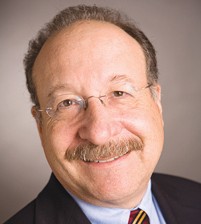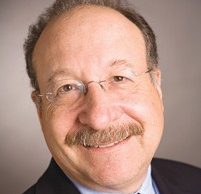
Henry Dubroff
“Methodical” is a word you might use to describe Jim Armstrong, the Santa Barbara City Manager who announced June 27 that he will be stepping down in September after 13 years on the job.
Ironically, that’s not always the word you’d choose to describe Santa Barbara itself. It is, after all, a city with an idiosyncratic streak that makes it beloved as a global tourism hub, maddeningly frustrating for business types trying to navigate its rules and regulations, and fawned over by travel writers and authors in search of “only in” stories and sagas.
Armstrong’s steady hand helped the city survive the financial meltdown, a deep recession that depressed home prices and even the tourism industry and Gov. Jerry Brown’s grab for redevelopment authority funds.
His ability to navigate troubled waters helped the city emerge from the crisis in better shape than other entities, notably Santa Barbara County. And his enthusiasm for the emerging startup culture, the Funk Zone and new corporate entrants such as music gear maker Sonos helped put Santa Barbara near the top of California cities when it comes to reducing unemployment.
Plentiful cruise ship permits and a rebound in high-end home prices also helped, as did a mayor and City Council who embraced enough growth and development to refill the city’s reserves as things turned around.
But a city by definition is a work in progress — and what happens or doesn’t happen in the way of progress in Santa Barbara impacts the entire region. Here are a few things that should be at the top of the to-do list for Armstrong’s successor:
• Complete the waterfront buildout. Barring a flurry of late permits, Cabrillo Boulevard will remain a work in progress. It will be up to the next city manager to finally bring the La Entrada project online and get the Parker family’s second waterfront hotel under way. These are the best alternatives to heavier reliance on cash from the cruise industry. The construction alone will generate new sales taxes and some well-paying jobs.
• Revitalize the Downtown Organization. Hoteliers, restaurateurs and merchants increasingly have turned to the chamber of commerce or the city’s lodging association to get their say on issues such as gang activity and public safety. The downtown group could be at the cutting edge of reducing gang activity, dealing with the issue of chronic homelessless and panhandling, and fostering sustainable practices. Right now, dozens of businesses in the downtown taxing district just write checks without understanding what they’re getting in return.
• Keep an eye on the airport. Santa Barbara’s municipal airport, which recently opened its new airport terminal, is a little gem that boasts far better service than its peers up the coast. But it has steadily lost flights. San Jose is long gone, U.S. Air/American has stopped its LAX service and Frontier Airlines has cut back its Denver flights. Meanwhile, Santa Maria and San Luis Obispo are aggressively courting nonstops. The airport is a separate department but it is key for both business and leisure travelers.
• Continue to innovate on the homelessness issue. Downtown panhandling remains an enormous problem, but recent efforts to patrol Milpas Street with golf carts and to attack the problem with housing-first solutions are showing progress. Innovation and technology can help manage this problem.
• Finally, don’t ignore pensions. As Armstrong’s final State of the City talk made clear, pensions will eat a larger and larger piece of the city’s personnel budget going forward. Without major reforms, the city will be broke or at least severely hampered when it comes to delivering basic services. My favorite solution is a hybrid system that puts a strict limit on defined benefit pensions and diverts pensions for higher-paid staff into defined contribution programs.
Meanwhile, it is useful that Armstrong will be sticking around as a Santa Barbara resident. He’s a steady player who can look at a big looming problem, size it up and find a solution.
• Contact Editor Henry Dubroff at hdubroff@pacbiztimes.com.






 Print
Print Email
Email

















